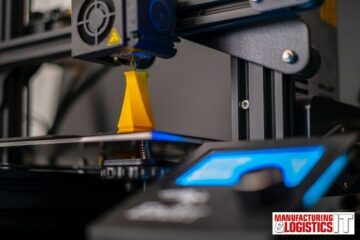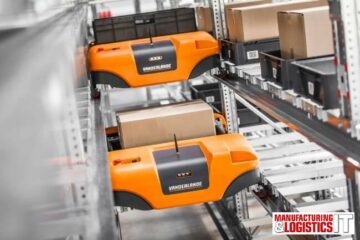By Andrew Busby, Global Industry Retail Lead at Software AG.
Some have heralded 2023 as the year that next-generation technology like AR and VR. But even if the metaverse may start to take hold, the reality is that for most shoppers this level of day-to-day integration is way off. Instead, what customers are looking for is centred around cost, convenience, and conscious sustainability.
They will become further intertwined. While the cost-of-living crisis hits wallets, trends such as rental and second-life will replace new purchases. For example, John Lewis is exploring clothes rental which addresses both cost and sustainability demands.

Convenience is also a massive pain point for consumers. While store visits are up, there are still sticking points in the experience of store shopping, not least checkouts. For example, 67% of US consumers say they’ve experienced a failure at the self-checkout lane, while long queues at manned tills were listed in the top two in-store frustrations, behind crowded stores.
Although Amazon Go had a rocky start with its checkout-free technology, it does set the future precedent. Shoppers are willing to take their time to find deals and make conscious purchases, but any barrier put in their way by retailers is given short shrift – and the window of tolerance is closing even further.
Widening the scope of digital transformation
Customer experience will always reign supreme, with mapping customer journeys considered foundational to understanding and improving that experience. But traditional mapping approaches may be limited as there are just so many ways a customer can now engage and travel through a brand.
Retailers need the ability to identify when someone walks into a store and makes a purchase, when and how they engaged with your website, and your social channels in the lead-up to that visit – and have all this information integrated together and readily available. While many retailers are tracking these touchpoints individually, data integration remains an issue. With multiple data systems, and multiple data sources, gaps in insight are inevitable. For example, as McKinsey explains, for many retailers “E-commerce capabilities were developed through a separate effort that used commercial solutions that were integrated only in a limited way with legacy systems, hindering the ability of retailers to implement truly omnichannel journeys”.
And, if you thought physical retail was dead, think again. Post-pandemic, store visits are creeping up as online purchases decrease month on month. Next, for example, reported a “sharp reversal” in customer behaviour this year, with stores recovering and online receding. After the surge in pandemic investment in digital, it might be easy to assume that physical retail is the poor relative, but customers are showing a desire to get back in touch with offline experiences – so long as they deliver.
This means tech is taking greater precedence in-store. Now, the lines between online and offline will blur further, and we will see a move from thinking of retail as ‘omnichannel’ to the idea of ‘seamless commerce’, where there is no delineation between experiences. When experiences are connected, the resulting data can be used to personalise customer experiences. According to McKinsey, over seven in ten consumers expect companies to deliver personalised interactions, with the same number getting frustrated when this doesn’t happen.
Joining the dots leads to the kind of next-level personalisation that can drive sales – the hard-won gold standard in retail right now. As McKinsey highlights, “companies that excel at personalisation generate 40% more revenue from those activities than average players.”
The fact is retailers are going to have to thoroughly evaluate their technology investments and roadmap if they’re to make the most of the challenges and opportunities in front of them. One thing to keep in mind is that creating better customer experiences is not just about the channels that they use, it’s also reflected in the efficiency and resilience of operations and supply chains. Investment in being more digital in these areas is going to be equally important.
- SEO Powered Content & PR Distribution. Get Amplified Today.
- Platoblockchain. Web3 Metaverse Intelligence. Knowledge Amplified. Access Here.
- Source: https://www.logisticsit.com/articles/2023/01/09/lessons-from-2022-from-diy-supply-chains-to-cost-cut-conscious-consumerism
- 2022
- 2023
- a
- ability
- About
- According
- activities
- addresses
- After
- AG
- All
- always
- Amazon
- Amazon Go
- and
- approaches
- AR
- areas
- around
- available
- average
- back
- barrier
- become
- behind
- being
- Better
- between
- blur
- brand
- capabilities
- chains
- challenges
- channels
- closing
- clothes
- commercial
- Companies
- connected
- conscious
- considered
- Consumers
- convenience
- Cost
- Creating
- crisis
- customer
- Customers
- data
- data integration
- dead
- Deals
- decrease
- deliver
- demands
- developed
- digital
- Diy
- Doesn’t
- drive
- efficiency
- effort
- engage
- engaged
- equally
- evaluate
- Even
- example
- Excel
- expect
- experience
- experienced
- Experiences
- Explains
- Exploring
- Failure
- Find
- For Consumers
- from
- front
- frustrated
- Frustrations
- further
- future
- generate
- get
- getting
- given
- Global
- Go
- going
- Gold
- Gold Standard
- greater
- happen
- highlights
- Hits
- hold
- How
- HTTPS
- idea
- identify
- implement
- important
- improving
- in
- Individually
- industry
- inevitable
- information
- insight
- instead
- integrated
- integration
- interactions
- investment
- Investments
- issue
- IT
- John
- Journeys
- Keep
- Kind
- Lane
- lead
- Leads
- Legacy
- Lessons
- Level
- Lewis
- Limited
- lines
- Listed
- Long
- looking
- make
- MAKES
- many
- mapping
- massive
- McKinsey
- means
- Metaverse
- might
- mind
- Month
- more
- most
- move
- multiple
- Need
- New
- next
- next-generation
- number
- offline
- omnichannel
- ONE
- online
- online purchases
- Operations
- opportunities
- Pain
- pandemic
- physical
- physical retail
- plato
- Plato Data Intelligence
- PlatoData
- players
- Point
- points
- poor
- post-pandemic
- Precedent
- purchase
- purchases
- put
- Reality
- recovering
- reflected
- remains
- replace
- Reported
- resilience
- resulting
- retail
- retailers
- revenue
- roadmap
- rocky
- sales
- same
- scope
- set
- seven
- Shoppers
- Shopping
- Short
- So
- Social
- social channels
- Software
- Solutions
- Someone
- Sources
- standard
- start
- sticking
- Still
- store
- stores
- such
- supply
- Supply chains
- Supreme
- surge
- Sustainability
- Systems
- Take
- taking
- tech
- Technology
- ten
- The
- The Future
- The Metaverse
- their
- thing
- Thinking
- this year
- thoroughly
- thought
- Through
- time
- to
- together
- tolerance
- top
- touch
- Tracking
- traditional
- travel
- Trends
- understanding
- us
- use
- Visits
- vr
- Wallets
- ways
- Website
- What
- which
- while
- will
- willing
- year
- Your
- zephyrnet












